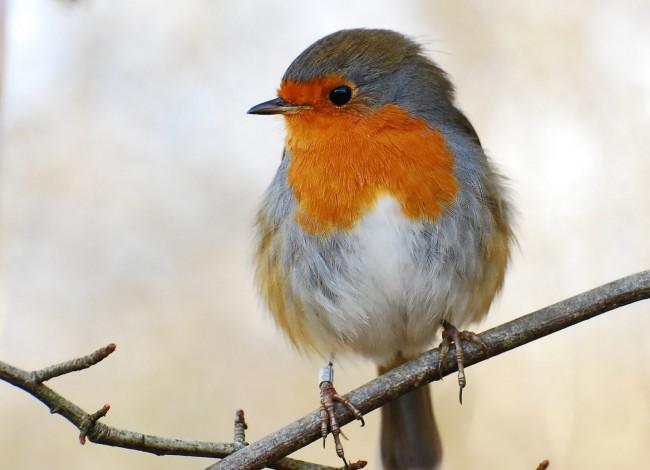
Researchers in the budding field of quantum biology hypothesize that birds are capable of using properties of quantum mechanics to help them make their extraordinary annual migrations. In particular researchers speculate that quantum entanglement can influence light-sensitive molecules within the eyes of birds and help them to “see” the Earth’s magnetic fields. Some experts predict that if true, this would mean that birds are capable of maintaining quantum entanglement for periods of time longer than those that can be detected using the most current and sensitive scientific instrumentation.
Each year over ten thousand different species of birds undertake astounding migratory ventures. The Arctic Tern (Sterna paradisaea) each year makes a round trip of 44,000 miles as it migrates back and forth from the North and South poles. The bar-tailed godwit (Limosa lapponica) travels 11,570 kilometers from Alaska to New Zealand without stopping to feed. Even the ruby-throated humming bird, which on average weighs only a few grams, completes a non-stop flight of over 1,000 kilometers across the Gulf of Mexico.
Given the extraordinary distances over which birds migrate, it is absolutely essential that they have precise navigation equipment. Failure to find a place to land, rest, and/or feed will nearly guarantee a wayward bird’s death. Experts have identified a number of different mechanisms that birds use to navigate. Some birds can orient themselves according to the Earth’s magnetic field because of deposits of magnetite within their bodies. Others navigate by the stars or by identifying major landmarks. Some birds that were raised in captivity have even been taught their historic migratory patterns by humans in light weight planes.
But not everyone is satisfied that question of how birds navigate during migration is completely resolved. In particular with regards to the hypothesis of using magnetite to align with the Earth’s magnetic fields, researchers were taken aback when it was demonstrated that European robins (shown above) could become disoriented in the presence of different colors of light or from exposure to very weak radio waves. With the current understanding of avian migration, such slight environmental alterations should not have such an effect.
The search for another explanation has led some researchers to hypothesize about the role of quantum mechanics in bird’s navigational hardware. In particular they were interested in how quantum entanglement could alter the molecular properties of light-sensitive molecules within a bird’s eye.
Quantum entanglement is a seemingly strange and yet well-established property of quantum mechanics. The theory states that two electrons that were formed at the same time become “entangled” with each other such that changes in one electron will affect the other. For instance, if one electron is induced to spin up, the other electron will automatically spin down. These electrons can communicate this information between each other even when they are separated at a great distance.
With regards to the problem of birds, some speculate that the paired quality of entangled electrons would allow birds to see the Earth’s magnetic field. The thinking goes that light would excite two entangled electrons in a single molecule found within a bird’s eye. The energy conferred from the light would excite one of these electrons such that it would transfer to another molecule. Even if the subsequent distance between the entangled electrons was quite small, they would experience pulls from the Earth’s magnetic field slightly differently. Consequently each electron would be induced to spin as a pair, and this in turn would alter the chemical properties of the molecule at large. If this were to happen to many molecules within a bird’s eye, it might result in birds being able to see the Earth’s magnetic field in patterns of light and darkness.
Though the idea of quantum entanglement influencing bird’s navigational systems is an intriguing notion, experimental evidence has yet to definitively confirm or refute it. Researchers are currently investigating molecules such as cryptochrome which may be influenced by entangled electrons and collectively contribute to a bird’s visualization of a magnetic field map. A research group from the University of Oxford has proposed that if the entanglement hypothesis is correct, birds would be able to detect entanglement for 100 microseconds—longer than what the most expert physicists have been able to detect using the most advanced equipment. However, until more experiments are conducted, the role of quantum entanglement in avian navigation, like other questions within the field of quantum biology, remain purely speculative.
By Sarah Takushi
Sources
BBC
Biophysical Journal
Bird Migration
Physics Central
Planet Science
The Economist
The Independent
Wired



3 thoughts on “Birds That Use Quantum Mechanics to Migrate”
Hello my friend! I want to say that this post is awesome, great written and include approximately all significant infos. I would like to look more posts like this .
would love to incessantly get updated outstanding web site! .
All animals navigate by Inertial means using the dynamic properties of the internal rotor in ATP Synthase available to the vast majority of living cells animal or plants. Is the precession of this rotor that locates the “line of action” of Gravity with amazing accuracy that allows sensing Lunar motion. I anticipated this kind of molecule based on “errors” in dancing Bees. See my postings in Animalnav dot org. My paper was published in 1989 and ATP Synthase was described by Sir John Walker FRS in 1993. He received his Nobel Prize in 1997 for Chemistry. I will be presenting a paper next April 2016 at the Royal Institute of Navigation in London. My model is fundamentally based in old fashion Newtonian mechanics.
Comments are closed.